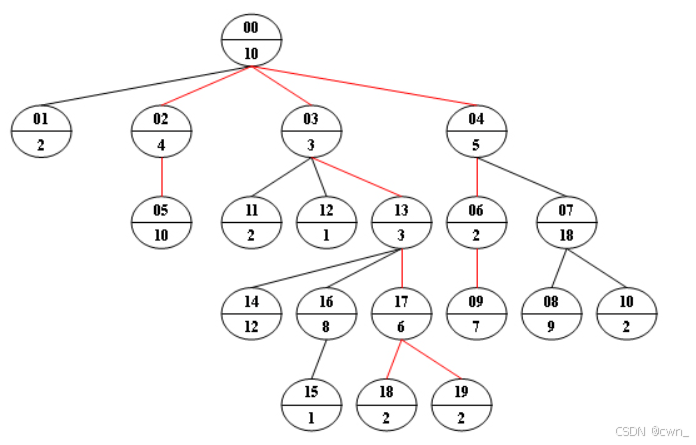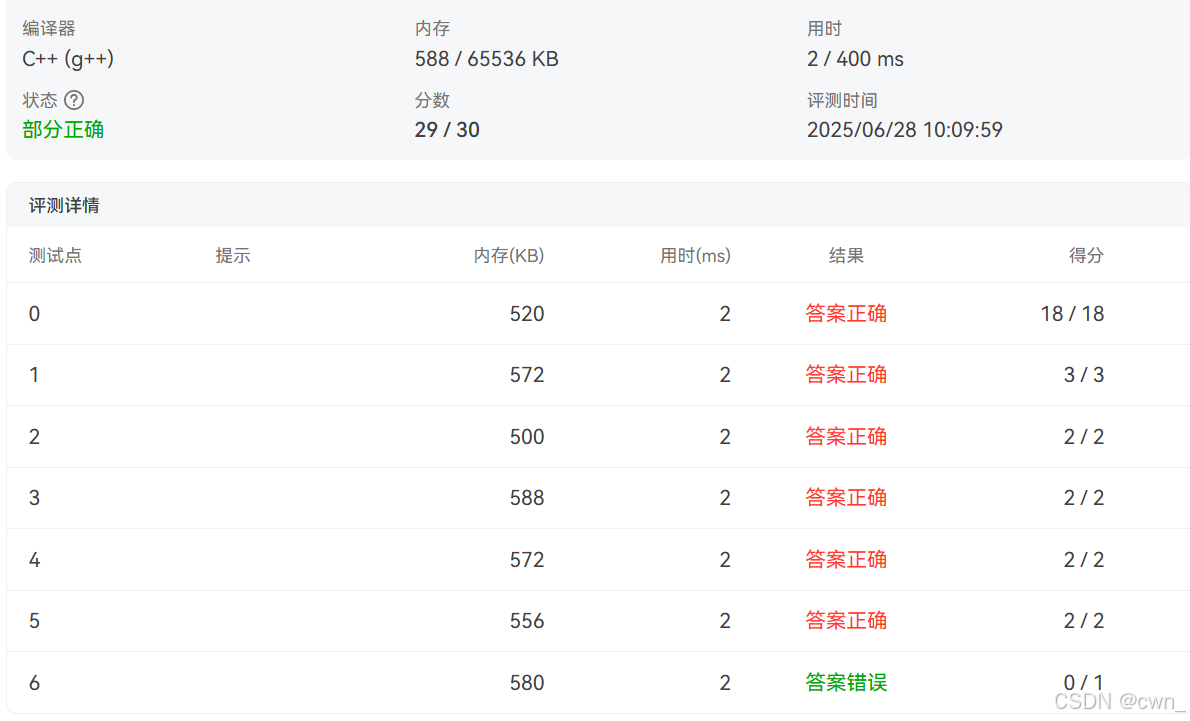Given a non-empty tree with root , and with weight as‐signed to each tree node . The weight of a path from to is defined to be the sum of the weights of all the nodes along the path from to any leaf node .
Now given any weighted tree, you are supposed to find all the paths with their weights equal to a given number. For example, let’s consider the tree showed in the following figure: for each node, the upper number is the node ID which is a two-digit num‐ber, and the lower number is the weight of that node. Suppose that the given number is 24, then there exists 4 different paths which have the same given weight: {10 5 2 7}, {10 4 10}, {10 3 3 6 2} and {10 3 3 6 2}, which correspond to the red edges in the figure

Input Specification:
Each input file contains one test case. Each case starts with a line containing , the number of nodes in a tree, (), the number of non-leaf nodes, and , the given weight number. The next line contains positive numbers where () corresponds to the tree node . Then lines follow, each in the format:
ID K ID[1] ID[2] ... ID[K]
where ID is a two-digit number representing a given non-leaf node, K is the number of its children, followed by a sequence of two-digit ID’s of its children. For the sake of simplicity, let us fix the root ID to be 00.
Output Specification:
For each test case, print all the paths with weight S in non-in‐creasing order. Each path occupies a line with printed weights from the root to the leaf in order. All the numbers must be sepa‐rated by a space with no extra space at the end of the line.
Note: sequence is said to be greater than sequence if there exists such that for , and .
Sample Input:
20 9 24
10 2 4 3 5 10 2 18 9 7 2 2 1 3 12 1 8 6 2 2
00 4 01 02 03 04
02 1 05
04 2 06 07
03 3 11 12 13
06 1 09
07 2 08 10
16 1 15
13 3 14 16 17
17 2 18 19
Sample Output:
10 5 2 7
10 4 10
10 3 3 6 2
10 3 3 6 2
dfs深搜每一个路径 到了叶子节点权重之和满足 输出该路径的每个节点的权重
因为要按照权重大小排序
so 就把存child的vector按照权重大小排一下序 先dfs权重大的先输出
然后30分只能得29,请教各位大佬 是哪个特例没判断嘛
然后没有满足的路径的话 题目没写到底要输出啥
所以我 搞了一个输出NULL (-1也试过了 也不行诶)
#include <iostream>
#include <algorithm>
#include <cstring>
#include <vector>
using namespace std;
int n;
int m;
int s;
bool flag;
const int N = 110;
struct Node
{
int data;
vector<int> child;
}node[N];
bool cmp(int a,int b)
{
return node[a].data > node[b].data;
}
vector<int> path;
void dfs(int root,int w)
{
if(w > s) return;
if(w == s)
{
if(node[root].child.size() != 0) return;
flag = true;
for(int i=0;i<path.size();i++)
{
if(i != path.size()-1) cout<<node[path[i]].data<<' ';
else cout<<node[path[i]].data<<endl;
}
return;
}
if(node[root].child.size() == 0) return;
for(int i=0;i<node[root].child.size();i++)
{
path.push_back(node[root].child[i]);
dfs(node[root].child[i],w+node[node[root].child[i]].data);
path.pop_back();
}
}
int main()
{
cin>>n>>m>>s;
for(int i=0;i<n;i++)
{
cin>>node[i].data;
}
int root = 0;
int t;
for(int i=0;i<m;i++)
{
cin>>root>>t;
while(t--)
{
int x;
cin>>x;
node[root].child.push_back(x);
}
sort(node[root].child.begin(),node[root].child.end(),cmp);
}
// for(int i=0;i<n;i++)
// {
// cout<<i<<' '<<node[i].data<<' ';
// for(int j=0;j<node[i].child.size();j++) cout<<node[i].child[j]<<' ';
// cout<<endl;
// }
path.push_back(0);
dfs(0,node[0].data);
if(!flag) cout<<"NULL"<<endl;
return 0;
}
感觉应该是个特例吧

 PAT A 1053:加权树路径权重问题求解
PAT A 1053:加权树路径权重问题求解























 368
368

 被折叠的 条评论
为什么被折叠?
被折叠的 条评论
为什么被折叠?










